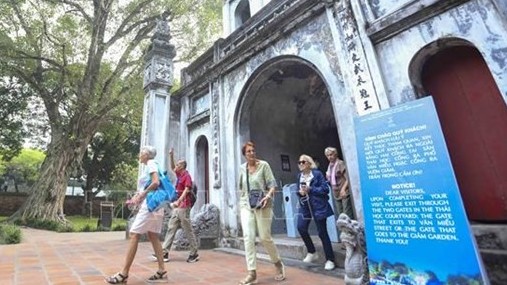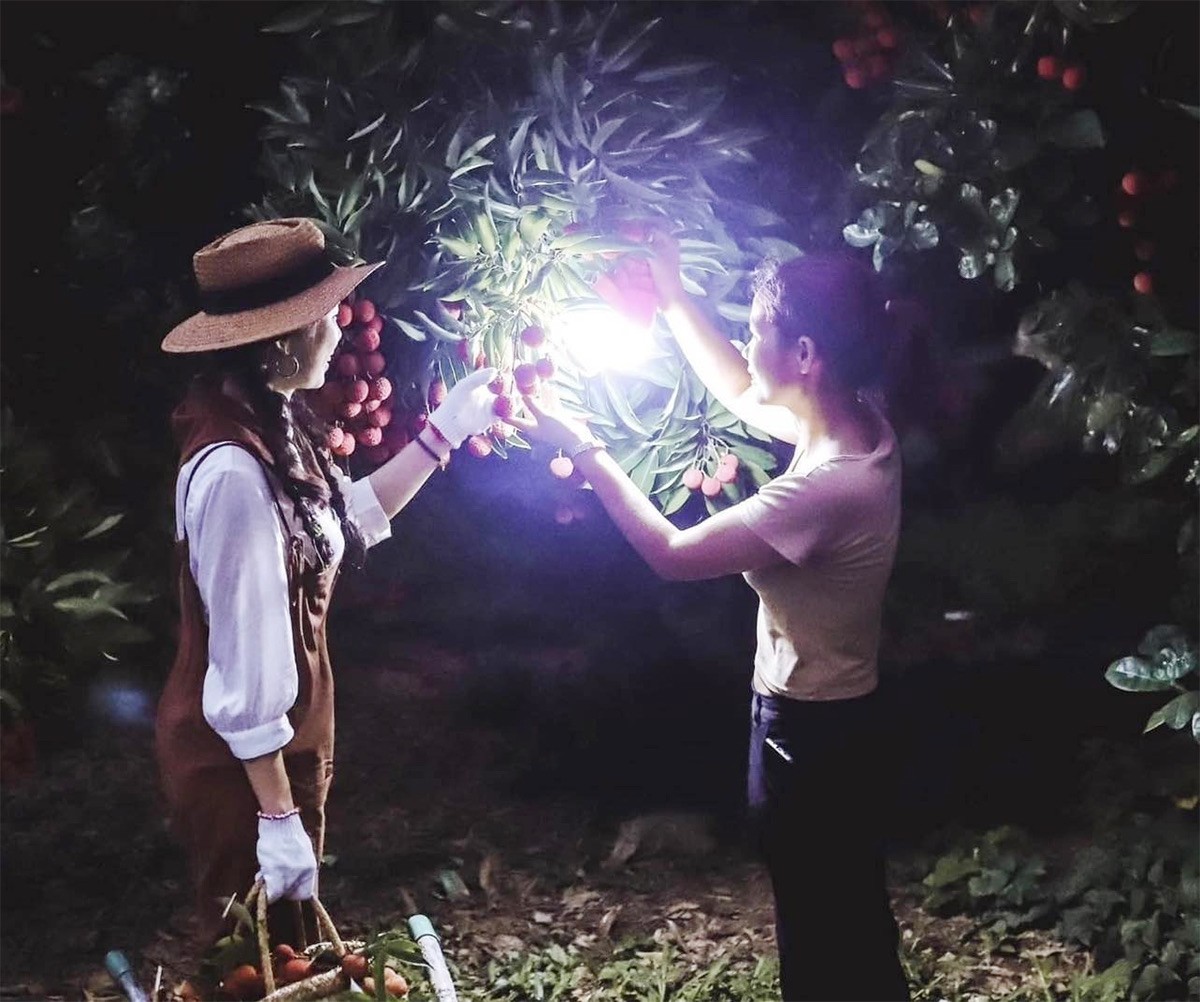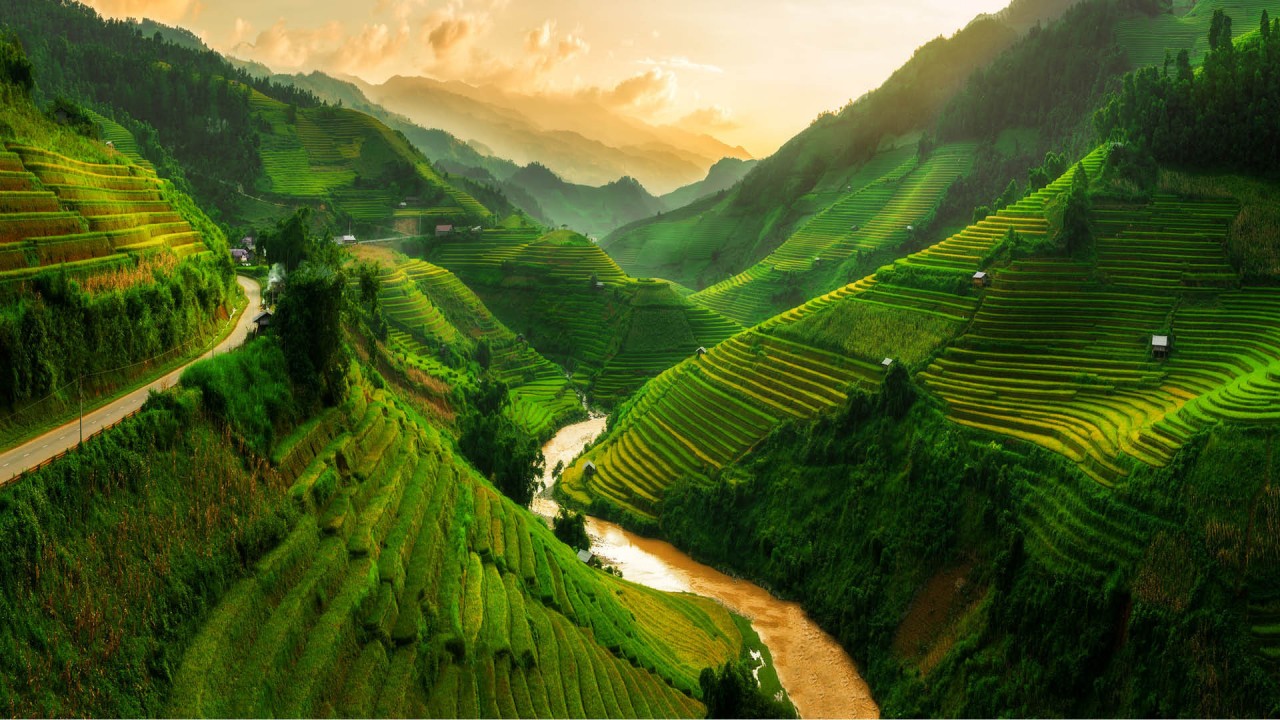Top 10 Must-Visit Tourist Attractions in Vietnam
There's a lot to love about travelling in Vietnam, which stretches from the soaring mountains and fascinating ethnic groups of the north to the endless rice paddies and vibrant waterways of the Mekong Delta in the south, with more than 3000km of glorious coastline in between.
Most travelers to Vietnam are attracted by the country’s wonderful natural beauty: From the green rice fields in the north to the fascinating bustle of the Mekong Delta in the south. Vietnam however is also a country with a long history and ancient traditions. It has many historic attractions and old temples. Here's an overview of the most amazing tourist attractions in Vietnam.
1. Ha Long Bay
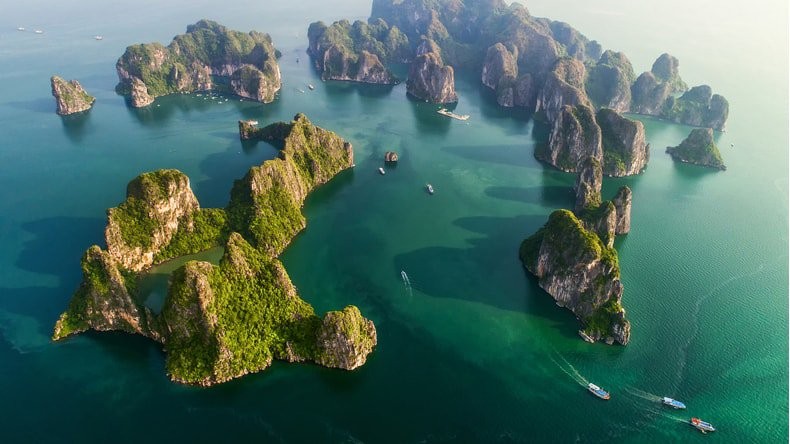 |
| Halong Bay |
Towering limestone pillars and tiny islets topped by forest rise from the emerald waters of the Gulf of Tonkin. Designated a World Heritage Site in 1994, Halong Bay's scatter of islands, dotted with wind- and wave-eroded grottoes, is a vision of ethereal beauty and, unsurprisingly, northern Vietnam's number one-tourism hub.
Sprawling Halong City (also known as Bai Chay) is the bay's main gateway, but its high-rises are a disappointing doorstep to this site. Most visitors opt for cruise tours that include sleeping on board within the bay, while a growing number deciding to eschew the main bay completely, heading straight for Cat Ba Island from where trips to less-visited but equally alluring Lan Ha Bay are easily set up.
All visitors must purchase entry tickets for the national park (40,000 VNF) and there are also separate admission tickets for attractions in the bay, such as caves and fishing villages (30,000 to 50,000 VND).
2. Thien Mu Pagoda in Hue
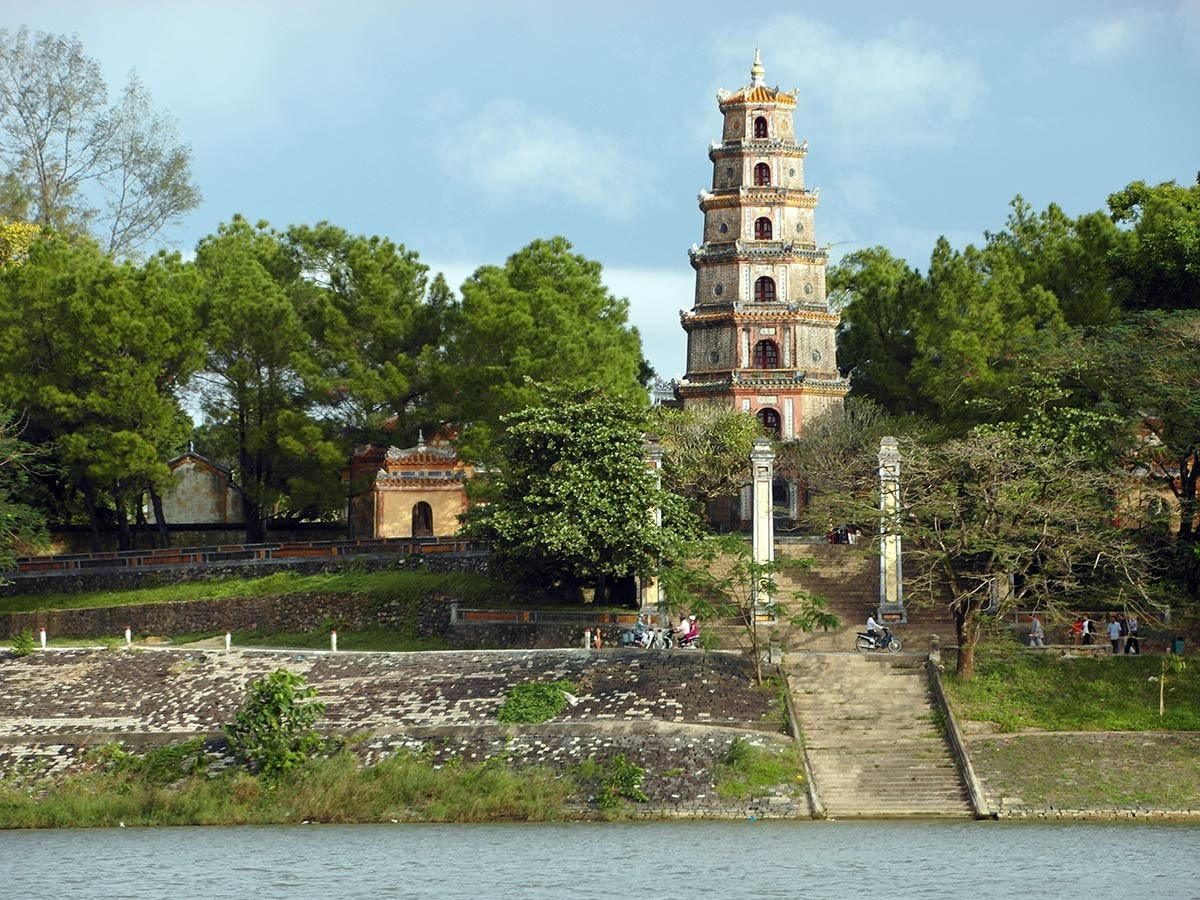 |
| World Pilgrimage Guide |
Built on a small hill overlooking the Song Huong (Perfume River), 4km southwest of the Citadel, this seven-storey pagoda is an icon of Vietnam and as potent a symbol of Hue as the Citadel. The 21m-high octagonal tower, Thap Phuoc Duyen, was constructed under the reign of Emperor Thieu Tri in 1844. Each of its storeys is dedicated to a manushi-buddha (a Buddha that appeared in human form).
Thien Mu Pagoda was originally founded in 1601 by Nguyen Hoang, governor of Thuan Hoa province. Over the centuries its buildings have been destroyed and rebuilt several times. Since the 1960s it has been a flashpoint of political demonstrations, with a notable moment coming in 1993, when a man arrived at the pagoda and, after leaving offerings, set himself alight chanting the word ‘Buddha.'
To the right of the brick pagoda tower is a pavilion containing a stele (a stone tablet) dating from 1715. It’s set on the back of a massive marble turtle, a symbol of longevity. To the left of the tower is another six-sided pavilion, this one sheltering an enormous bell (1710), weighing 2,052kg and audible from 10km away.
Beyond the pagoda tower is a gateway, on the upper floor of which sits an effigy of the Celestial Lady (Thien Mu) that the pagoda is named after. Above the central portal is a board with the Chinese characters 靈姥寺 (literally 'Divine Old Woman Temple'), in honour of the presiding deity of this plot of land.
The temple itself is a humble building in the inner courtyard, past the triple-gated entrance where three statues of Buddhist guardians stand at the alert. In the main sanctuary behind the bronze laughing Buddha are three statues: A Di Da, the Buddha of the Past; Thich Ca, the historical Buddha (Sakyamuni); and Di Lac Buddha, the Buddha of the Future.
3. Hoan Kiem Lake in Hanoi
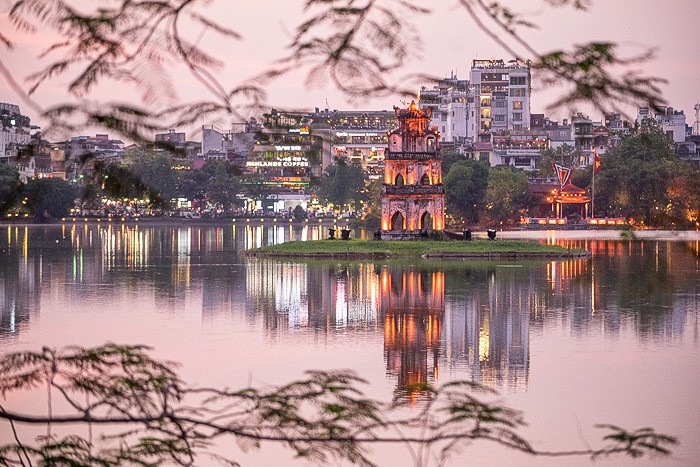 |
| Hanoi - For 91 Days |
The lake is considered the heart of Hanoi, not only geographically but also symbolically. In fact, the more you spend time learning about the lake, the more special it becomes.
The tale goes that Le Loi King came across a shining metal bar when he visited his friend. It turned out that his friend caught the bar in one of his attempts for fish. The King asked for the bar, brought it home and moulded it into a sword. All of a sudden, there was two words printed on the sword “Thuan Thien” (harmonious with heaven).
Le Loi then understood that the sword was a gift from heaven. He used it for the battle against the war with a neighbouring country. At the beginning of 1428, when peace prevailed, on one of his trip to the Thuy Quan (now Hoan Kiem) Lake, there was a tortoise rising above water and shouting: “Please return the sword to the Dragon King”. Without hesitation, the King threw the sword to the lake. The tortoise took the sword and dove down the water. From then on, Thuy Quan became Hoan Kiem lake.
The lake is not only special in her history. The water color of Hoan Kiem Lake is not commonly found in other lakes elsewhere in the country: greenish, with dark or light shade depending on the reflection of the sky. The lake is full of tortoises. If you are lucky, you will catch sight of these giant animals rising out of water. And because the tortoise is considered a sacred animal in Vietnam’s culture (along with dragon, phoenix and unicorn), Hoan Kiem Lake becomes a holy place that nurtures tortoises.
4. Phu Quoc
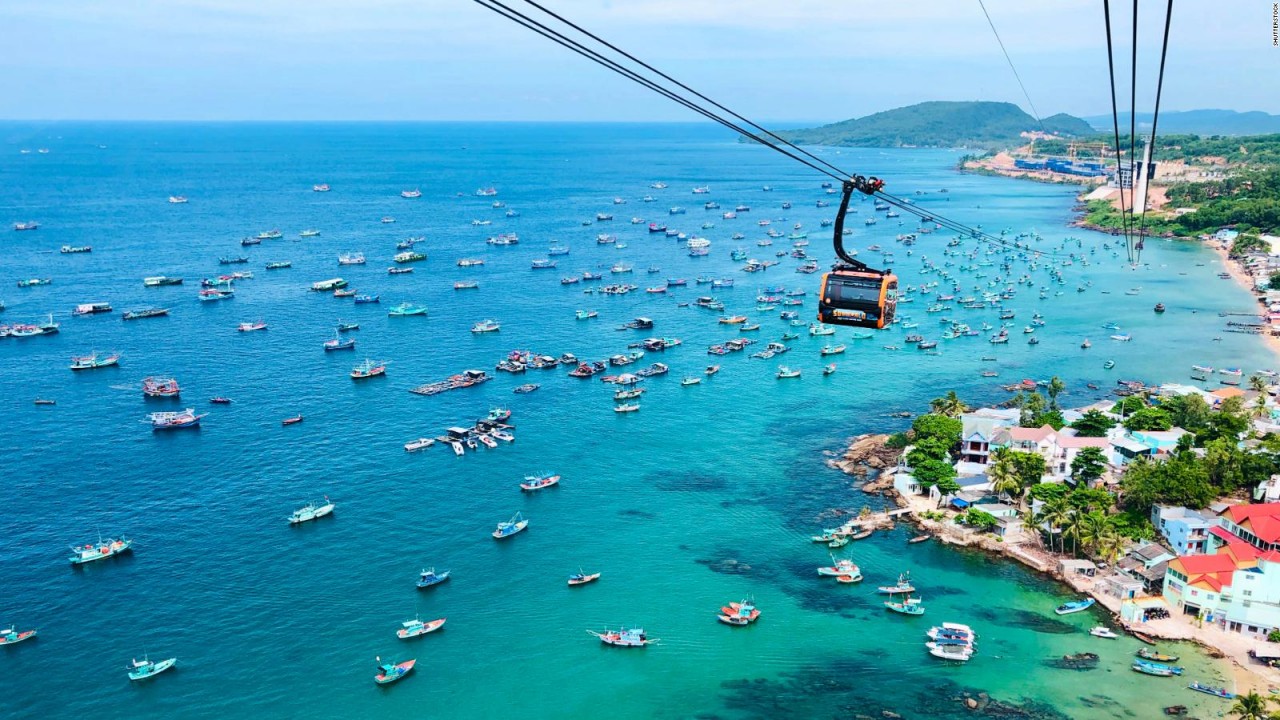 |
| Photo: CNN |
Phu Quoc Island boasts idyllic beaches, romantic sunsets, evergreen forests, and a serene atmosphere, making it an ideal holiday destination for travellers looking to escape bustling city life. Located 45 kilometres west of Ha Tien in the far south of Vietnam, the northern part of the island is relatively untouched due to its status as a UNESCO-listed national park but there are plenty of luxurious resorts, funky bars, and quaint cafes along the southern coastline.
Aside from beachside activities, visitors can also explore traditional villages, expansive nature parks and Buddhist pagodas, all of which are easily accessible via motorcycle, taxi, bus or even day trips by reputable companies. Catering to just about any budget level and preference, Phu Quoc’s dining scene ranges from local markets selling fresh seafood and Vietnamese street food to expat-owned bistros offering authentic western and European fare.
5. Hoi An
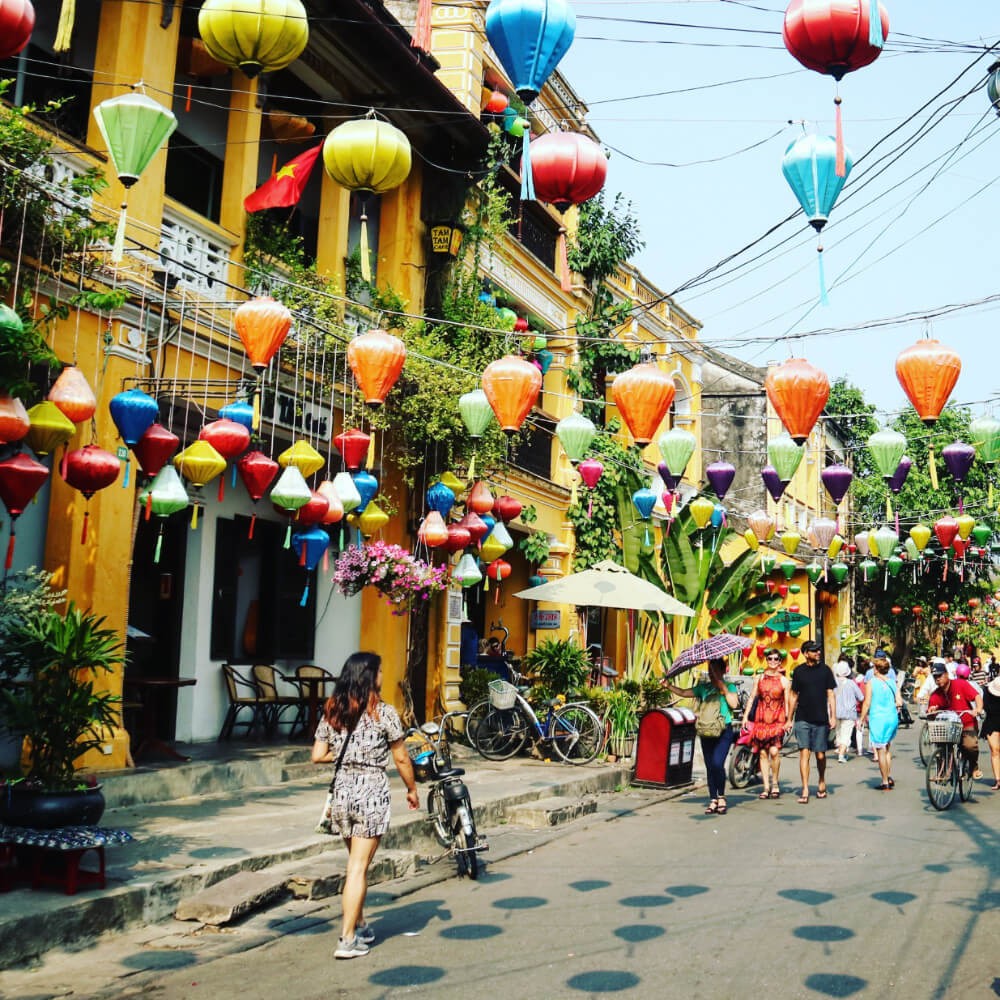 |
| Temples and Treehouses |
Hoi An, once a major Southeast Asian trading post in the 16th and 17th centuries, is basically a living museum that houses old-town architecture.Some notable heritage buildings include Chinese temples, a Japanese-designed bridge, pagodas, wooden shop-houses, French-colonial houses, and old canals. Although large-scale trading had long moved elsewhere, Hoi An has been successful in preserving and restoring its charming roots and was declared a UNESCO World Heritage site in December 1999.
Hoi An Riverside is the best place to be at night as the area is lit by quaint and old-fashioned lanterns, making it an atmospheric and beautiful spot. For those who love sea, sun and sand, Hoi An offers two lovely beaches 5 kilometres away from the town centre – a sort of holiday within a holiday.
Hoi An is also known for its great food, fun shopping, skilled tailors, friendly people and cosy atmosphere – all key characteristics that draw people to this picturesque town.
6. Sa Pa Terraces
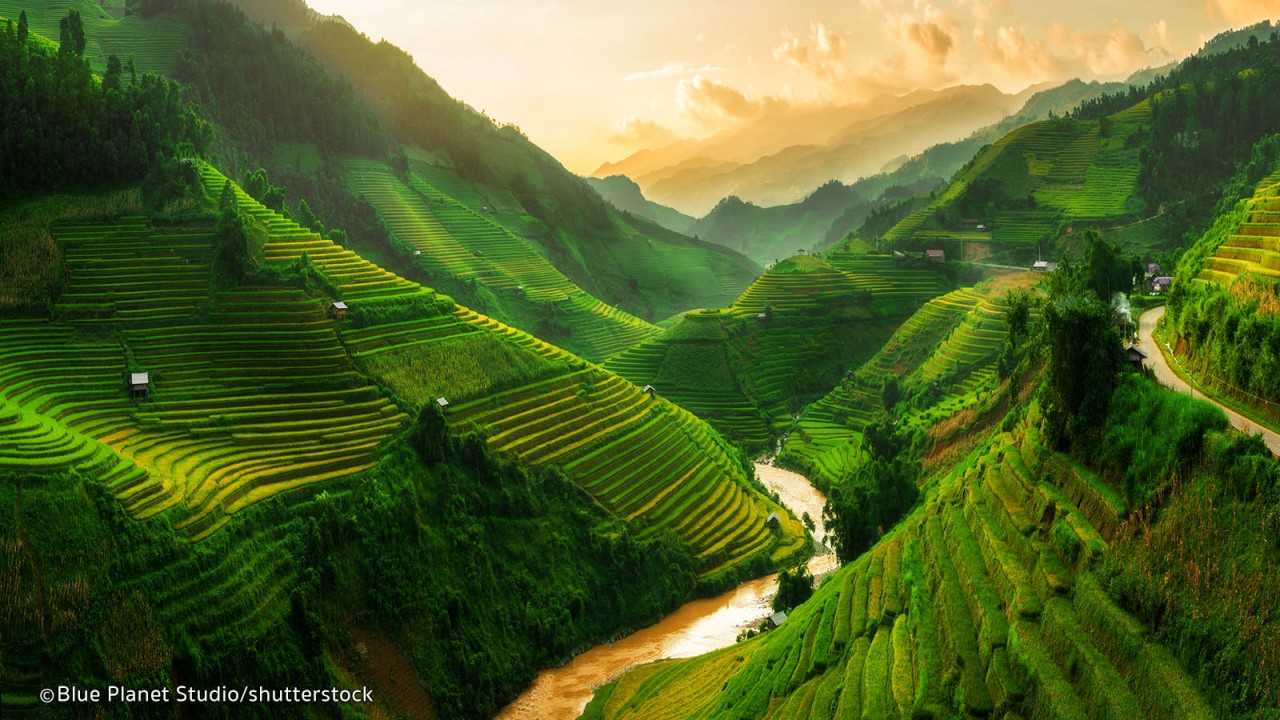 |
| Photo: Shutterstock |
Those who once come to the land of Sapa will not be surprised to see the terrace rice fields as beautiful as the steps up the sky high. Sapa ladder brings the beauty of a beautiful picture. so beautiful. This is always a unique attract tourist destination in Vietnam.
Terrace rice fields are one of the most interesting things to do while traveling sin Sapa with its beautiful natural beauty every autumn and the bustling fields along the mountain slopes creating a lively natural picture.
Together with other world natural wonders, the Terraced Rice Fields are recognized as natural and man-made masterpieces. Nowadays the world’s seven most beautiful terraces are said to be Banaue (Philippines ); Yuangyang (Yunnan Province, China); Ubud (Indonesia, Indonesia); Annapurna (Neve); Mae Rim (Chiang Mai, Thailand); Sa Pa (Lao Cai province, Vietnam) and Long ji (Guilin, China).
On terraced fields and famous Sapa tourism area of Vietnam, Travel and Leisure writes: “With a wonderful landscape that looks like a ladder climbing up the terraces. Sapa has become one of the most tourist attractions of Vietnam."
"You can take the train from Hanoi to Lao Cai city and then go to Sapa. You can see the scenic rice fields along road to Sapa."
It has a sub-tropical monsoon climate (called the flooding season). Lao Cai highland as well as some Northwestern provinces to May 5-6 each year in the new season. sowing rice. This is the time when the most beautiful scenes of the summer appear on the terraced rice fields around the high mountains of Sa Pa, Bac Ha, Bat Xat and Si Ma Cai.
7. Mui Ne
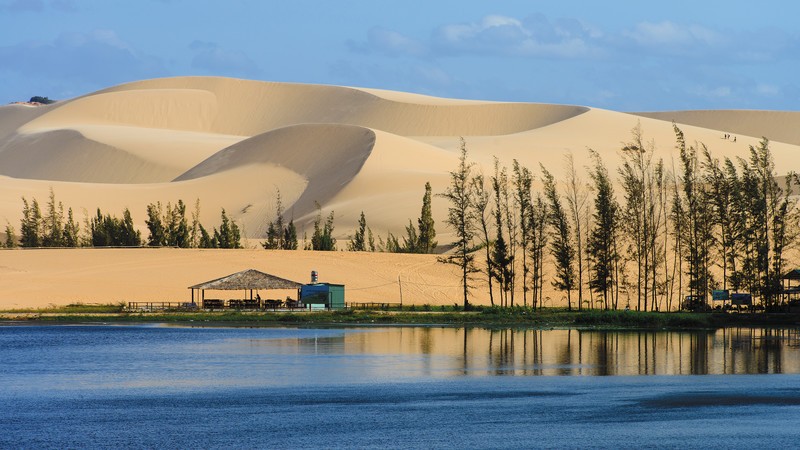 |
| Intrepid Travel |
About 200 km north of Ho Chi Minh City are Mui Ne and Phan Thiet. Together, these traditional fishing villages are fast becoming a popular leisure destination. Resort-style developments have been rising along the coastline, though so far the lives of the fishing communities remain unchanged and Mui Ne’s long beach is quiet and serene, great for walks, jogging and spectacular sunsets.
Phan Tiet, which is rather larger, is famous for its fish sauce, an ingredient in most Vietnamese dishes. It, too, has a beautiful beach. There is a wide range of accommodation, and restaurants offer a huge selection of seafood at very affordable prices. There are golf courses, beautiful pagodas, spectacular red and white sand dunes, and a variety of water sports.
8. Cu Chi Tunnels
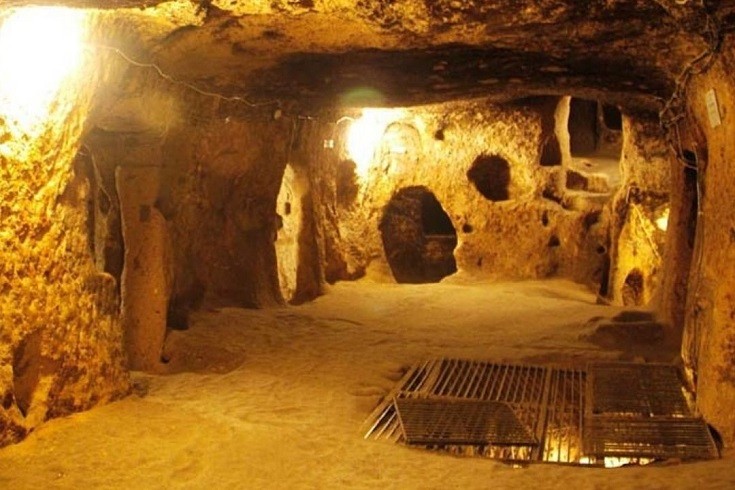 |
| Photo: Vietnam Discovery |
In order to combat better-supplied American and South Vietnamese forces during the Vietnam War, Communist guerrilla troops known as Viet Cong (VC) dug tens of thousands of miles of tunnels, including an extensive network running underneath the Cu Chi district northwest of Saigon.
Soldiers used these underground routes to house troops, transport communications and supplies, lay booby traps and mount surprise attacks, after which they could disappear underground to safety.
To combat these guerrilla tactics, U.S. and South Vietnamese forces trained soldiers known as “tunnel rats” to navigate the tunnels in order to detect booby traps and enemy troop presence. Now part of a Vietnam War memorial park in Ho Chi Minh City (formerly Saigon), the Cu Chi tunnels have become a popular tourist attraction.
In all, at least 45,000 Vietnamese men and women are said to have died defending the Cu Chi tunnels over the course of the Vietnam War. In the years following the fall of Saigon in 1975, the Vietnamese government preserved the Cu Chi tunnels and included them in a network of war memorial parks around the country.
Visitors to Vietnam can now crawl through some of the safer areas of the tunnels, view command centers and booby traps, fire an AK-47 rifle on a firing range and even eat a meal featuring typical foods that soldiers living in the tunnels would have eaten.
9. Nha Trang
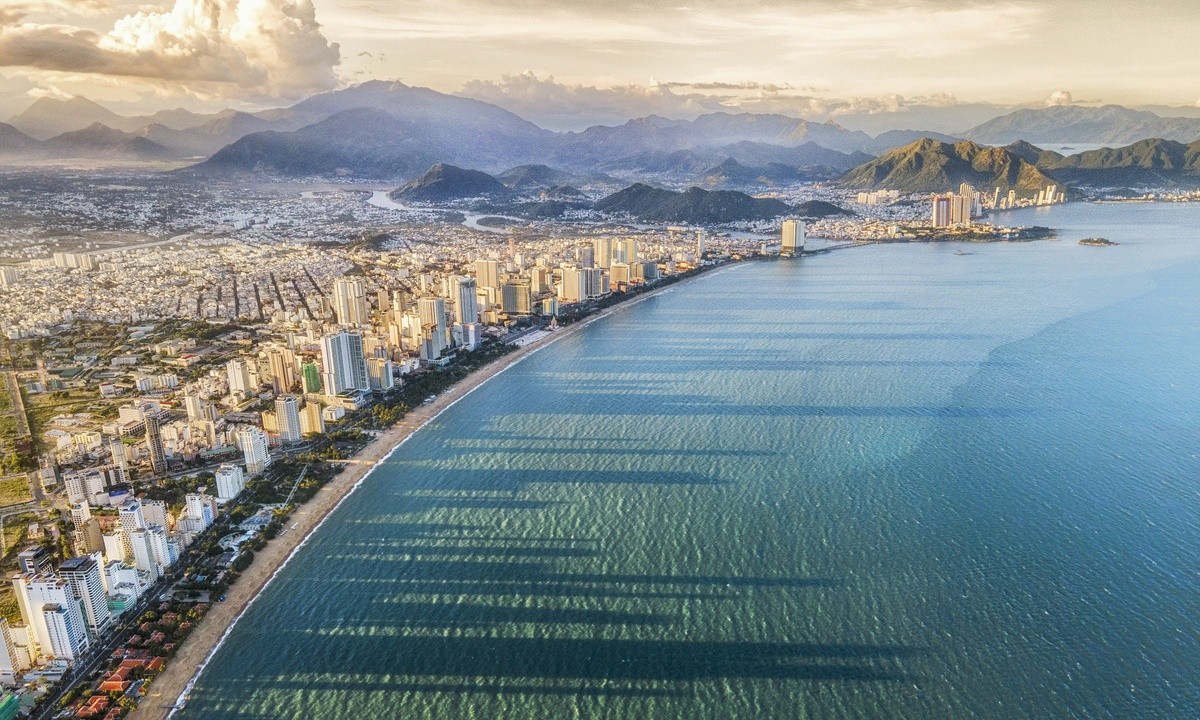 |
| Photo: VnExpress |
Perched on a pristine stretch of the southern coast, Nha Trang is a playground for sunseekers. Days here are spent dining on delicious seafood, snorkelling around stunning islands, and partying on the sand after dark. Nha Trang lays claim to some of the country's finest luxury resorts and thrilling watersports. Despite the development boom, colourful fishing villages and serene riverside restaurants are just a stone's throw away.
During the day, Nha Trang Beach is awash with sunbathers. A few kilometres south of the city, Long Beach is home to a clutch of local seafood joints and surfing spots. If you feel like exploring farther, hire a motorbike to Dốc Lết or Đại Lãnh beaches.
Nha Trang's boasts a unique pair of wellness attractions: mud baths and hot springs. Hidden in the hills just north of the city are a handful of spa-like facilities, where you can sit in a healing pool of warm mud before relaxing in hot mineral water.
Daylong island excursions will show you around Nha Trang Bay, and a series of small islands nearby such as Monkey Island, Hòn Mun Island, and Yến Island where you’ll be greeted by beautiful, untouched shores.
10. My Son
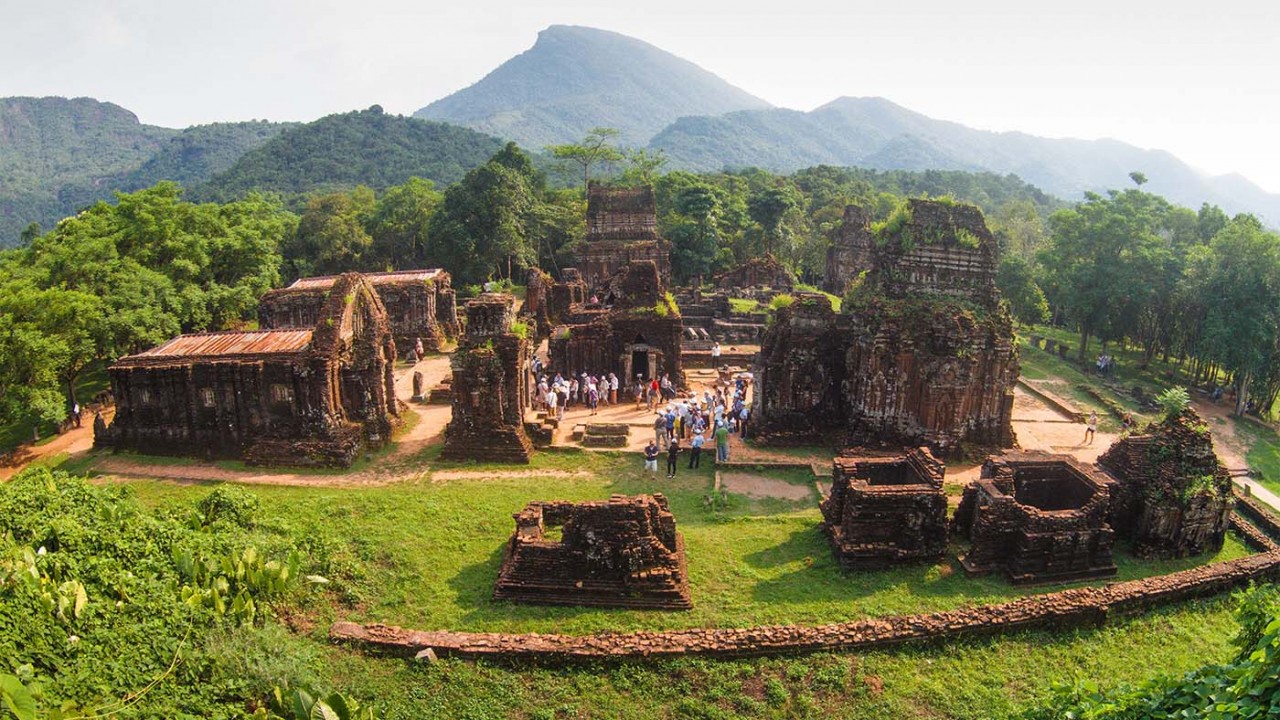 |
| Photo: Vietnam Online |
My Son Sanctuary is regarded as one of the main religious centers of Hinduism in Southeast Asia. This is an architectural ensemble of unique tower-temples, which still hides numerous mysteries and strongly attracts both domestic and foreign tourists.
My Son Sanctuary is situated in Duy Phu commune, Duy Xuyen district, Quang Nam province, about 69 km from Da Nang City and 20 km from Tra Kieu ancient capital. It is the complex of numerous Champa tower-temples in a valley roughly two kilometers wide, surrounded by two mountain ranges. This used to be a site of religious ceremony for kings of the ruling dynasties of Champa, as well as a burial place for Cham royalty and national heroes. My Son Sanctuary is regarded as one of the main religious centers of Hinduism in Southeast Asia and is the foremost heritage site of this nature in Vietnam. Notably, among 225 Cham vestiges that are founded in Vietnam, My Son possesses 71 monuments and 32 epitaphs, the content of which is still being studied. My Son Sanctuary is often compared with other historical temple complexes in Southeast Asia, such as Borobudur of Java in Indonesia, Angkor Wat in Cambodia, Bagan of Myanmar or Ayutthaya in Thailand.
My Son Sanctuary was honored as one of the UNESCO World Heritage Sites at the 23rd session of the World Heritage Committee in 1999. Based on architectural remains, My Son perhaps began construction in 4th century. Over many centuries, the holy land added a great number of multi-shaped towers to become main vestiges of Cham culture in Vietnam. Beside ceremonial functions, My Son is a cultural and religious center of Champa Dynasty, as well as the burial place for Kings, royalty and powerful national heroes. My Son is greatly influenced by Indian architecture - reflected in the temples immersed in the glorious past, and Indian culture - reflected in ancient Sanskrit inscription on steles. One of the most important steles found at My Son is erected by Dharma Prakasa in 657 AD. The purpose of steles was to commemorate the king's establishment of a god identified as the ruler of the world, i.e. Shiva. These steles are important because it sets forth the king's ancestry and is of great help in reconstructing the sequence of Champa's rulers.
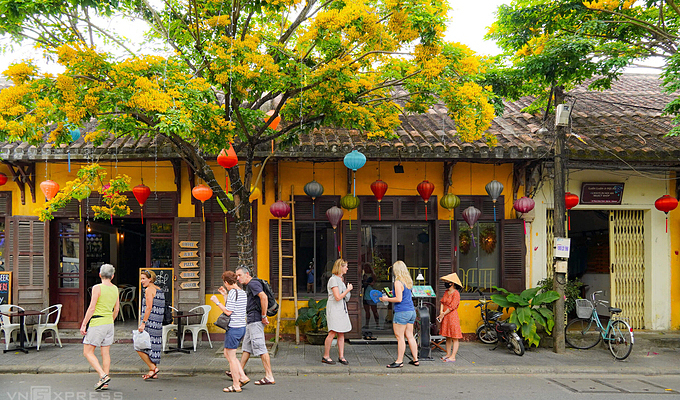 | Vietnamese Excited for Tourism Revival Vietnamese people are excited for tourism to return, according to the Welcome Back to Travel survey released by the online travel platform Agoda. |
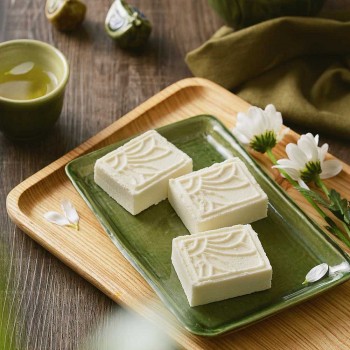 | 7 Delicious Dishes You Should Not Miss in Cao Bang Cao Bang - The Wonderland of Viet Nam, is not only famous for its magnificent beauty, but also its delicious and charming delicacies. |
 | Online Tourism - an Inevitable Trend in Vietnam Amid Covid-19 Online tours are promoted by many localities thanks to the support of modern technology. This is considered an effective solution, both promoting tourism in the ... |
In topics
Recommended
 Handbook
Handbook
Vietnam Moves Up 8 Places In World Happiness Index
 Handbook
Handbook
Travelling Vietnam Through French Artist's Children Book
 Multimedia
Multimedia
Vietnamese Turmeric Fish among Best Asian Dishes: TasteAtlas
 Handbook
Handbook
From Lost to Found: German Tourist Thanks Vietnamese Police for Returning His Bag
Popular article
 Handbook
Handbook
Prediction and Resolution for the Disasters of Humanity
 Handbook
Handbook
16 French Films To Be Shown For Free During Tet Holiday In Vietnam
 Handbook
Handbook
Unique Cultural and Religious Activities to Welcome Year of the Snake
 Handbook
Handbook








